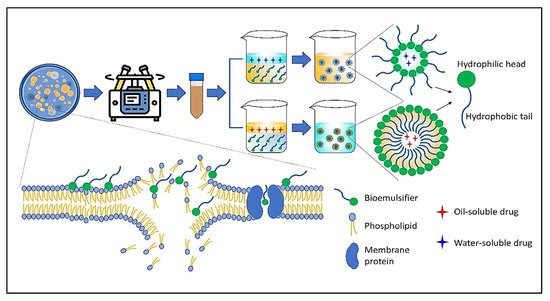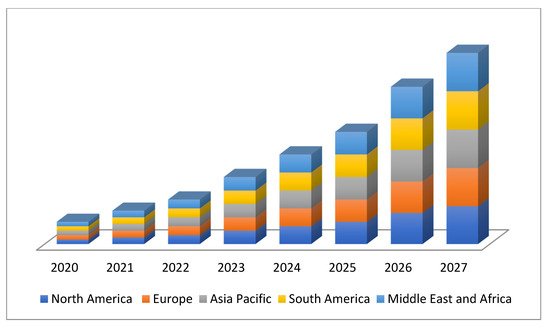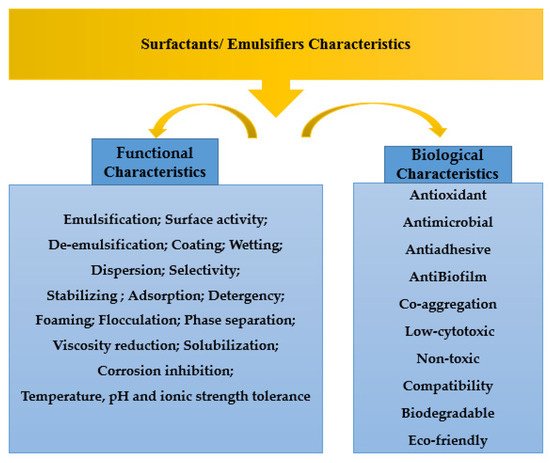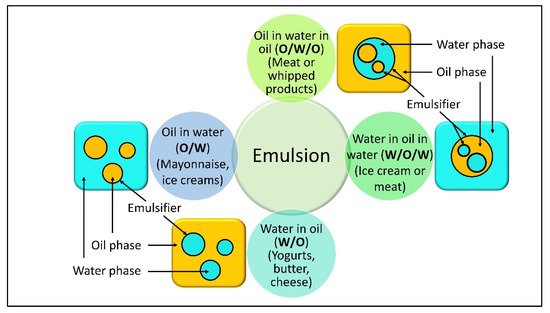Your browser does not fully support modern features. Please upgrade for a smoother experience.
Please note this is a comparison between Version 1 by Francesco Cacciola and Version 2 by Beatrix Zheng.
Bioemulsifiers have a larger molecular weight than biosurfactants, because they are complex mixes of lipopolysaccharides, lipoproteins, heteropolysaccharides, and proteins. Due to their functional capabilities and eco-friendly properties, bioemulsifiers (BE) are regarded as multifunctional biomolecules of the twenty-first century. Numerous microorganisms produce bioemulsifiers under a variety of diverse and extreme environmental conditions. Bioemulsifiers are widely used in a variety of industries, including medicine, petroleum, food, pharmaceuticals, chemicals, textiles, and cosmetics.
- emulsifiers
- food
- microbial surfactants
- biodegradable
- non-toxic
- fungi
1. Bioemulsifiers
Emulsifiers can be synthesized chemically or via microbial metabolism (bioemulsifiers). Bioemulsifiers are versatile chemical compounds that are capable of stabilizing oil-in-water emulsions and are critical in a variety of industrial applications [1][16]. They are also referred to as biopolymers or polysaccharides with a high molecular weight. Even at low concentrations, these molecules emulsify two immiscible liquids efficiently but are less effective at reducing surface tension. Combining polysaccharides, fatty acids, and protein components in bioemulsifiers enhances their emulsifying capacity [2][17]. Liposan, produced by Candida lipolytica, is the most studied bioemulsifier [3][18]. It is roughly 17% protein and 83% carbohydrate (polysaccharide–protein complex). The carbohydrate portion contains glucose, galactose, galactosamine, and galacturonic acid.
Emulsan is an extracellular heteropolysaccharide composed of two biopolymers: 20% exopolysaccharide and 80% lipopolysaccharide with a high molecular weight. It was extracted in the late 1970s from a hydrocarbon-degrading Arthrobacter sp. RAG-1 (later renamed Acinetobacter venetianus RAG-1) [4][19]. Emulsan addition improved the stability of alginate microspheres, allowing for the fine-tuning of biological molecule release by using different emulsan concentrations. The authors concluded that emulsan is an excellent candidate for protein and pharmaceutical delivery. Specific emulsan–alginate formulations have been granted patents as medication delivery methods and vehicles for the removal of protein-based toxins from food and/or other items [5][6][20,21]. Acinetobacter radioresistens was successfully used by Navon-Venezia et al. to produce Alasan [7][22]. Alasan is a compound of covalently bonded anionic polysaccharides that contain alanine-rich proteins. The emulsifying and surface activities of Alasan have been related to the compound’s three main proteins, which have molecular weights of 16, 31, and 45 kDa. According to Toren et al., the protein with a molecular mass of 45 kDa exhibited the highest emulsifying activity, exceeding even the intact alasan complex [8][23].
Mannoproteins are a class of glycoproteins isolated from the cell walls of a variety of yeasts. According to their chemical composition and specific functions in living systems, these molecules are classified as structural and enzymatic mannoproteins. The most abundant type of mannoprotein is structural, which consists of a small protein portion linked to a larger carbohydrate portion (mannopyranosyl), whereas enzymatic mannoproteins contain more protein moieties. Not only are these molecules effective emulsifiers, but they have also been linked to the stimulation of host immunity via the activation of immune cells and proteins as well as the induction of antibody production [9][10][24,25]. Figure 12 depicts the structure and mechanism of action of a number of significant emulsifiers produced by microorganisms through biotechnology processes.

Figure 12.
The schematic and action mechanism of bioemulsifiers in emulsion systems.
2. Applications of Bioemulsifiers in Food Industry
The marketing of emulsifiers is expected to reach a value of USD 17.53 billion by 2027, while registering this growth at a rate of 6.90% for the forecast period of 2020 to 2027 [11][94]. Growing global demand for packaged foods worldwide is expected to create a new business opportunity for the market (Figure 23) [12][88]. The increasing use of emulsifiers in food products such as infant, child nutrition products and snacks are expected to enhance the market growth. Other factors such as increasing population health consciousness, rising disposable income, expansion in the cosmetics and personal care industry, and increasing concern about the food safety and quality will further provide the emulsifiers market in the forecast period of 2020 to 2027. However, these chemical emulsifiers cause negative impacts on gut health through impaired intestinal barrier function and increasing the incidence of inflammatory bowel disease (IBD). Researchers have produced emulsifiers using natural resources and the availability of a minor or non-toxic alternative, especially microorganisms due to restricted resources and high costs [13][14][95,96].

Figure 23.
Worldwide emulsifiers market size.
The unique natural properties of bioemulsifiers are the amphiphilicity (hydrophilic and hydrophobic) and their ability to reduce interfacial tension and surface area. Other interesting properties viz., coagulation, emulsification, cleansing, wetting, foaming ability, phase separation, surface activity and reduction in the oil viscosity permit their exploitation in many industries. Bioemulsifiers have a wide range of structural, compositional, and functional features due to the variety of their microbial origins, which include fungi [15][16][49,97], bacteria [17][98], and actinomycetes [18][99]. Figure 34 shows the main characteristics most bioemulsifiers may have to be considered as “emulsifier”. The bioemulsifiers such as liposan from Candida lipolytica were able to stabilize the emulsions of vegetable oils and water. It was also able to stabilize the corn oil, cottonseed oil, peanut oil, and soybean oil emulsions [19][100].

Figure 34.
Various biological and functional properties of bioemulsifiers.
The formulation of food determines several phases among particles [20][101]. Figure 23 shows basically the main types of emulsions that are important in a variety of foods. This precise structural organization of bioemulsifier molecules allows surface-active agents/emulsifiers to quintessence at the O/W interphase, leading to boosting the modynamic stability of an unstable system [21][102]. Because of their amphiphilic nature, emulsifiers have significant emulsifying powers and may be molded with starches and protein fractions of food items. Additionally, the partly digested fatty components are adequately emulsified/homogenized by bioemulsifiers. The emulsifier binds to protein portions of food items, causing them to aggregate together [22][103]. Mannor protein producing Saccharomyces cerevisiae facilitates the stabilization of W/O emulsions for products such as mayonnaise and ice creams [23][104]. Water in oil in water (W/O/W) and oil in water in oil (O/W/O) are two more sophisticated types of duplex emulsions (multiple) (Figure 45).

Figure 45.
Three main forms of emulsions important in a variety of foods.
Lipopolysaccharides, heteropolysaccharides, lipoproteins, glycoproteins, and proteins are regarded as beneficial for commercial applications as bioemulsifiers. A variety of new uses of new and well-known bioemulsifiers have been described in the recent three years. The excellent properties of both microbial produced biosurfactants and bioemulsifiers have features that make them desirable as natural emulsifiers for foods. Different studies have described the use of glycolipids to stabilize fat emulsions as well as glycolipids and lipopeptides as rheology modifiers in cookie and muffin dough [24][25][3,105]. Other studies have found that bioemulsifiers (such as exopolysaccharides and mannoproteins) have a high potential for aroma emulsification [26][106].
Incorporation of Bioemulsifiers in Food Formulations
-
Salad dressing formulation was prepared using sunflower oil, vinegar, water, egg powder, sugar, salt, starch, etc. with Candida-derived bioemulsifier (C. utilis 0.2–0.8% (w/v) combined with guar gum/carboxymethyl cellulose. The consistency and texture was improved using 0.7% of bioemulsifier [27][107
- 5
- summarizes some of the most interesting findings.
Table 15.
The latest (2015–2022) findings on some bioemulsifiers exhibiting potential activity.
| Bioemulsifiers | Microorganisms | Activity | Application | Reference |
|---|---|---|---|---|
| Lipopeptide | Bacillus licheniformis MS48 | Improving textural and sensorial properties | Yogurt | [29][109] |
| Glycolipoprotein | Acinetobacter indicus M6 | Antibacterial | Food control | [30][110] |
| Proteoglycan | Meyerozyma caribbica | Emulsifiers | Food industry | [31][111] |
| Exopolysaccharides (EPS) | Rhodobacter johrii CDR-SL 7 Cii | Emulsifier Emulsion Stabilizer | Food industry | [32][112] |
| Carbohydrate–lipid–protein complex | Candida utilis | Emulsifiers | Corn oil and Sunflower oil | [28][108] |
| Succinoglycan exopolysaccharide | Rhizobium radiobacter CAS | emulsion stabilization | Soybean oil | [33][113] |
| EPS | Pseudomonas fluorescens | Emulsifier | Food industry | [34][114] |
| EPS | Chromohalobacter canadensis 28 | Emulsifier Emulsion Stabilizer Foamer | Food industry | [28][108] |
| Glycoprotein | Lactobacillus plantarum subsp. | Emulsifiers | Food industry | [35][115] |
| Lipopeptide | Nesterenkonia sp. MSA31 | Antioxidant, Emulsifier, Emulsion Stabilizer | Food industry | [26][106] |
| emulsan-alginate | Pseudomonas stutzeri 273 | Removing protein-based toxins from food products | Food-processing contamination | [36][116] |
| Polyketide derivative | Penicillium chrysogenum | Emulsifiers | Oil | [37][117] |
- ].
-
Cookie dough formulation incorporated bioemulsifier from S. cerevisiae URM 6770, partially (2% (w/v)) or completely (4% (w/v)) substituting egg yolk in the existing formulation, and it showed similar physicochemical properties along with increasing the energy value of the cookies by providing fatty acids in the end product [24][3]. Table 1
